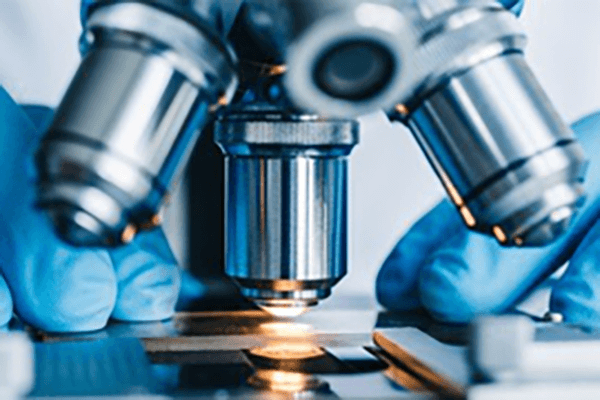
Producing the required exterior polish for a processed workpiece is highly significant.
- Engineering annotations specify detailed surface expectations for components
- Surface notes typically employ Ra—arithmetic mean deviation—when specifying roughness
- Grasping callout meaning is essential to make parts conform to design intent
- Specified roughness affects lubricant distribution, frictional performance, and durability
- Careful reading of finish callouts enables achieving the planned outcome
CNC Machining — Precision Engineering Explained

CNC machining represents a game-changing method in production with programmed toolpaths the apparatus generates complex components precisely.
- Programmed mills and lathes produce top-tier parts across material types
- Broad CNC applicability benefits industries like aerospace, automotive, and healthcare
- CNC machining delivers exceptional repeatability ensuring identical parts across production runs
From initial prototype stages to mass-manufacture CNC machining supports modern production workflows
CNC Specs Explained
Making sense of CNC specs can seem confusing on first pass
That said, foundational understanding plus a method lets you confront technical details
Start with locating core parameters: spindle rpm, feed, accuracy, work envelope, controller
Each metric impacts the machine’s aggregate capability.
Example: increased spindle revolutions aid soft materials; accelerated feed raises production.
Seeing these associations aids in selecting the correct machine for your use
Don’t forget to review maker-supplied manuals carefully.
Maker resources usually present informative direction and demystify jargon
CNC Machines Explained: A Full Guide
CNC systems refer to programmed machine tools for accurate automated part production across materials They operate by interpreting digital instructions called G-code to control cutting tools or other actuators.
- Frequent CNC varieties include mills, lathes, routers, plasma cutting machines
- Production processes accommodate metal alloys, plastics, woods, and composite materials
- Besides that CNC systems permit speedy prototyping and short production runs for businesses and research groups
CNC Basics and Explanations
They manifest coupling of mechanical fidelity and complex software governance CNC platforms apply programming to fabricate both basic components and complex assemblies Underlying principle converts virtual designs into actual manufactured items.
- Numerical control manufacturing
- Programmed manufacturing process
It includes exact tool motions driven by CNC instructions Shop technicians tune machining parameters, supervise production, and certify product accuracy.
Surface Finish Considerations for CNC
Meeting set surface quality in CNC work is significant It changes how a part performs and how it looks Workpiece material, tool settings, and secondary finishing processes determine texture.
Fine finishes raise resilience whereas rough profiles can restrict performance CNC systems provide diverse tooling and strategies to reach required finishes.
- Such as employing varied cutter geometries |carbide alloys|RPM and feed adjustments to craft finish
- Also surface treatments such as grinding and polishing can refine textures
Grasping how machining variables affect texture is critical to obtain optimal outcomes.
Introduction to CNC Machining
Precision production uses machine control software to shape parts from different material classes They apply digital directives to fabricate detailed geometries consistently Knowing programming basics and tool selection secures better machining outcomes
CNC applications stretch across aerospace, automotive, medical device, and electronics industries From fine aerospace pieces to intricate mold geometries, CNC underpins complex manufacturing
How to Specify Surface Finish for CNC Parts
Appropriate surface specification is essential during CNC part production It secures that the final item meets both functionality and looks Drawings usually depict finish requirements with Ra roughness values Measured in micrometers or inches, the number reflects mean surface roughness height.
Factor in desired smoothness and the component’s functional purpose when setting finish callouts

In practice smoother finishes help where exact fits and close tolerances are essential
Rougher textures often suit parts intended for grip or high-friction contact
Provide specific finish callouts in engineering drawings to communicate texture needs Include both the Ra value along with any additional instructions such as machining processes or surface treatments.
Understand that effective surface annotations are critical to production success
Classification of CNC Machines and Uses
There exists a diverse field of CNC machines built to serve many operational purposes They leverage CAD/CAM designs to instruct cutters for accurate and efficient fabrication.
- Milling centers craft intricate contours cavities and surfaces by subtractive cutting
- Routers handle flat panel cutting and profiling for non-metal workpieces
- Laser systems produce fine kerfs and detailed shapes in thin materials
Equipment choice hinges on material, design intricacy, and precision requirements Machine-specific strengths enable applications in fields ranging from aerospace to automotive engineering.
Achieving Optimal Surface Finish with CNC Machining
Creating superior finishes is essential and CNC control systems help produce them With deliberate feed-speed-tool strategies professionals steer cutting dynamics to achieve smoother surfaces Furthermore the utilization of high-quality tooling materials and proper lubrication techniques contributes to a smoother finish Appropriate strategy choice combined with accurate setup produces excellent surface outcomes.
Surface Finish Considerations in CNC Programming
Tuning code to influence finish plays a central role in meeting quality aims Feed, spindle settings, and cutter design are major drivers of the final surface condition Meticulous parameter tuning together with suitable coolant use promotes smoother finishes.
- Plus regular inspection and maintenance of tools copyright finishing standards Continuous tool maintenance and oversight preserve high finish consistency Continuous cnc process tool maintenance and oversight preserve high finish consistency
- In order to refine finish consider material, target roughness, and end-use needs
- Employing simulation software can help visualize and fine-tune cutting parameters before machining reducing the risk of surface defects
- Continuous tool maintenance and oversight preserve high finish consistency
